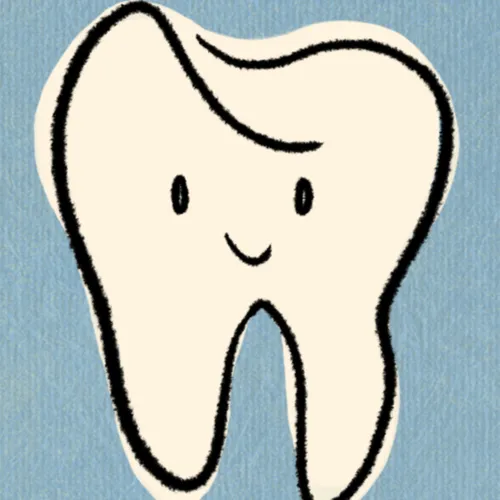Dental Anatomy 3: Lobes, Cusps, Inclinations, & more
- Author
- Je$$ie
- Published
- Sun 27 Aug 2023
- Episode Link
- https://podcasters.spotify.com/pod/show/jeie/episodes/Dental-Anatomy-3-Lobes--Cusps--Inclinations---more-e28jkq7
Occlusal Curvatures and axial positions
Curve of spee: 2d curvature = buccal cusp tips of premolars and molars posteriorly, curvature begins @ tip of canines and curves upwards from anterior → posterior
Max molar roots = inclined MESIALLY
Mandi molar roots = inclined DISTALLY
Curve of Wilson: the medio-lateral curvature of the occlusal plane of posterior teeth → complements the paths of the condoles during mandible movement
Also 2d
Crowns of MANDI posterior teeth incline to the lingual (Lingual Lower)
Crowns of MAX posterior teeth incline toward buccal (Buccal Upper)
Molars have greater inclination bc the curve → deeper posterior
Sphere of Monson AKA compensating occlusal curvature = 3d sphere shaped curvature for occlusal plane Concave curve for mandi, convex for maxillary = combo of curve and spee and curve of Wilson
Axial position/Root inclination
Axial position = the inclination of a tooth from vertical axis
Normally described in mesiodistal and faciolingual direction (but a combo of the two) = opposite of BULL
Crown is normally inclined in the OPPOSITE direction = BULL
Crown surface form
From facial/lingual aspects ALL permanent teeth = rougly trapezoidal
Tooth
Shape of Crown
Info
Anterior
Tringular
Proximal view → triangular
Base = cervical 3rd
Apex = incisal 3rd
Apex = wedge in tearing, biting, and incising food
Max posteriors
Trapezoidal
Proximal view → trapezoidal
Base = cervical
Wedge → aids in distribution of forces during mastication and self-cleaning process
Mandi posteriors
Rhomboidal
Proximal → rhomboidal
Crowns = inclined toward the lingual = proper interlocking of the Mandi and max posterior teeth during mastication
Contact areas
Increase in size with age = Abrasive contact in proximals broaden the area
Mesiodistal length of dental arches = get shorter = as teeth become narrower mesiodistally, they are moving closer to midline
Proper contact location = stabilizes dental arch and prevents food packing
Contact areas become more cervically located from anterior → posterior in each quad (basically just move down towards cervical 3rd from midline to molars)
Distal contact area normally = more cervical location than mesial contact
Relative size increases from anterior to posterior in each quad
Posterior teeth → contact areas = normally located to the buccal of center in the faciolingual dimension
Cervical Line: Curvatures
CEJ = cervical line = line around the tooth where enamel and cementum meet
Separates anatomical crown and root → only visible when not covered by soft tissue
It is stable (unlike gingival line → everchanging)
Gingival line = gingival margin/crest → imaginary line which marks the level of termination of nonattached soft tissue surrounding the tooth
Separates the clinical crown and root → is always visible
Epithelial attachment = actual attachment of the soft tissue of the mouth to the tooth
Can be distinguished From the PDL
Connection for soft gingival tissue
PDL = attachment of the hard tissue (bone_ to the tooths root structure
Usually a sulcus between gingival Marin and epithelial attachment
Cervical Line Countour Rules
Cervical line normally curved (convex) or bulges TOWARD the apical on the → lingual and facial teeth surfaces
CL is normally convex toward the incisal/occlusal on → the mesial and distal surfaces
The amount (depth) of cervical line curvature on any tooth is normally GREATER on the MESIAL compared to distal
Cervical lines on adjacent prox. Surfaces of adj. teeth have → approx same depth of curvature
Depth of curvature on all surfaces = greatest on → central incisors and decreases POSTERIORLY
